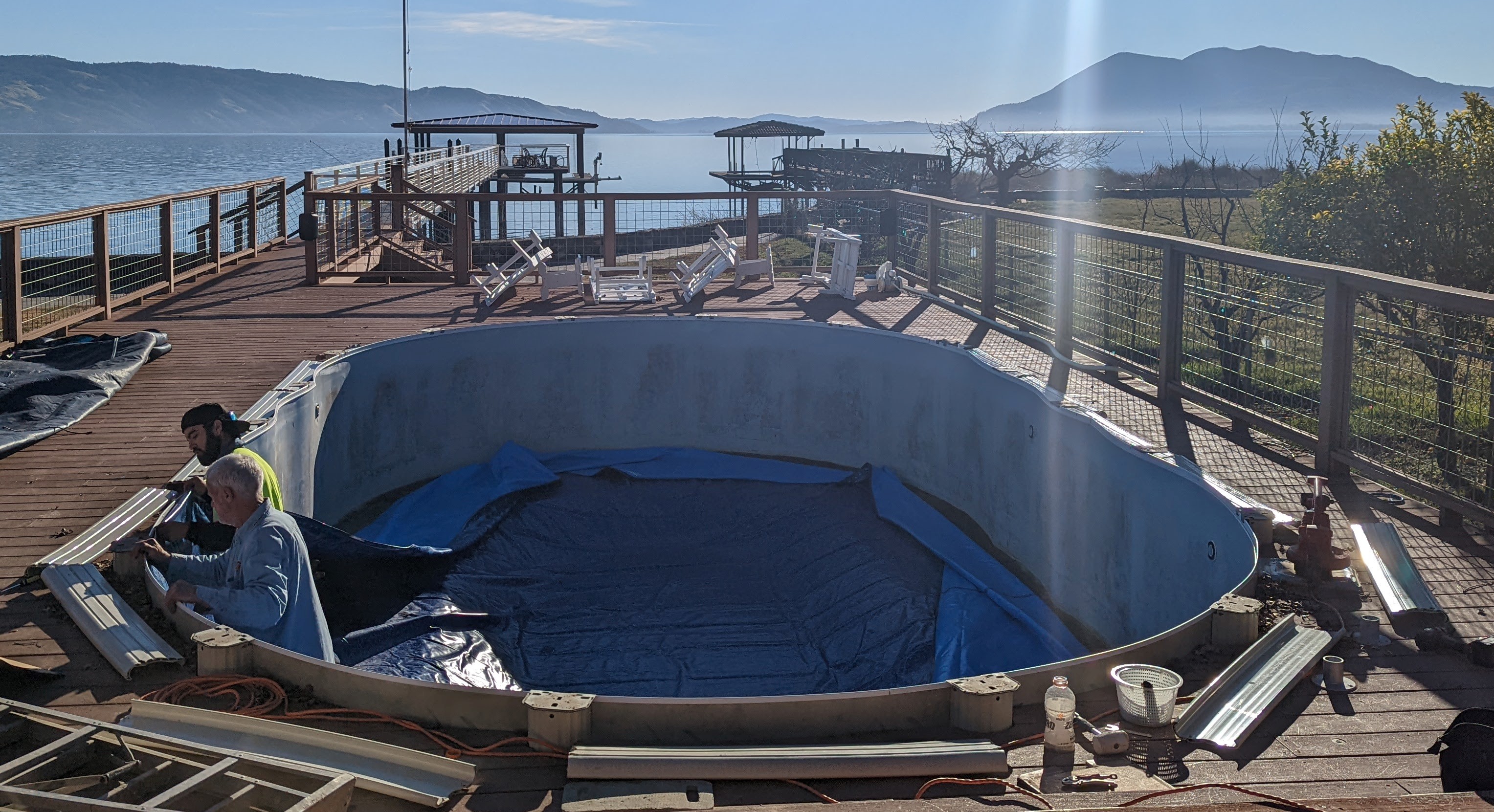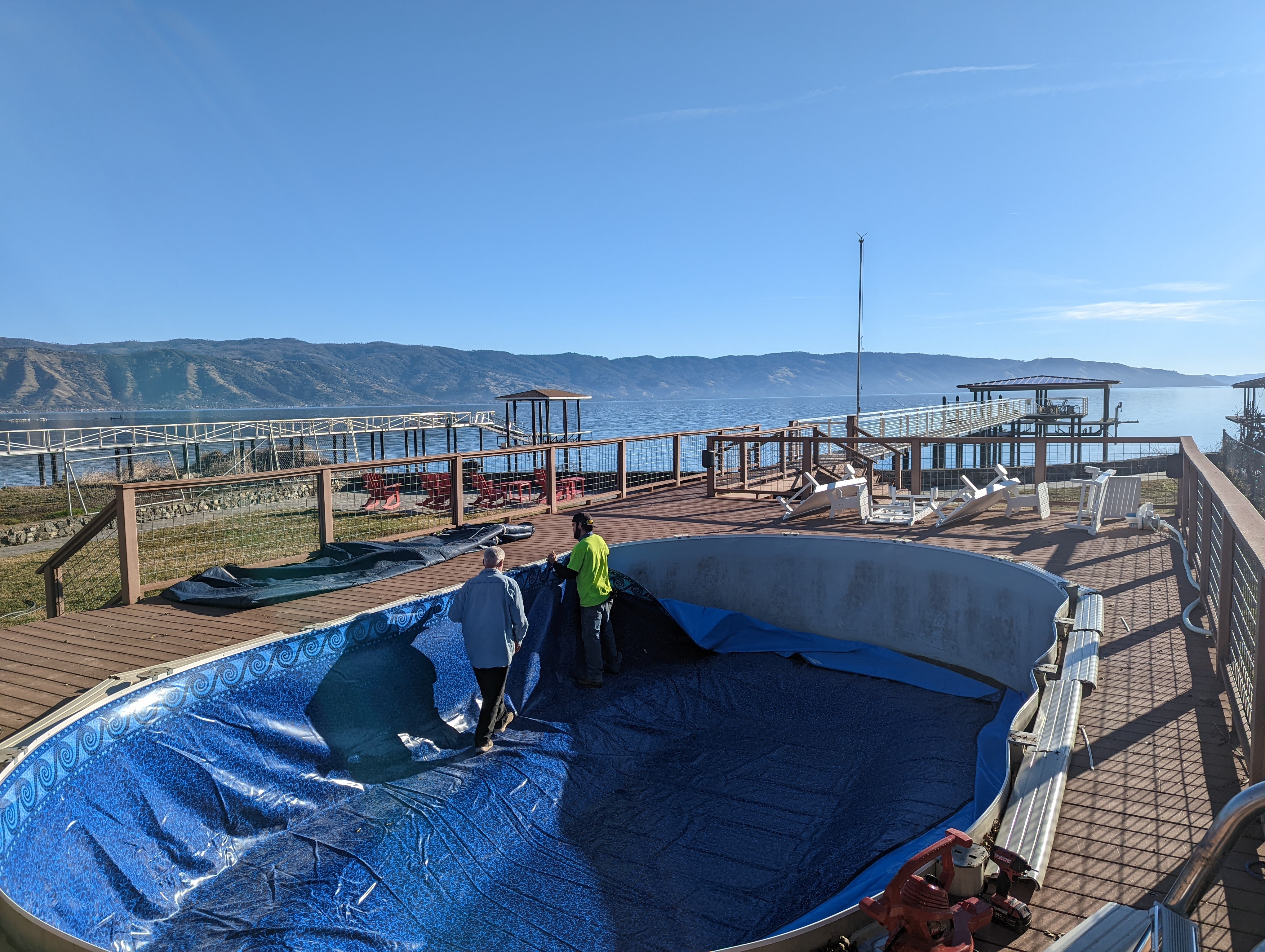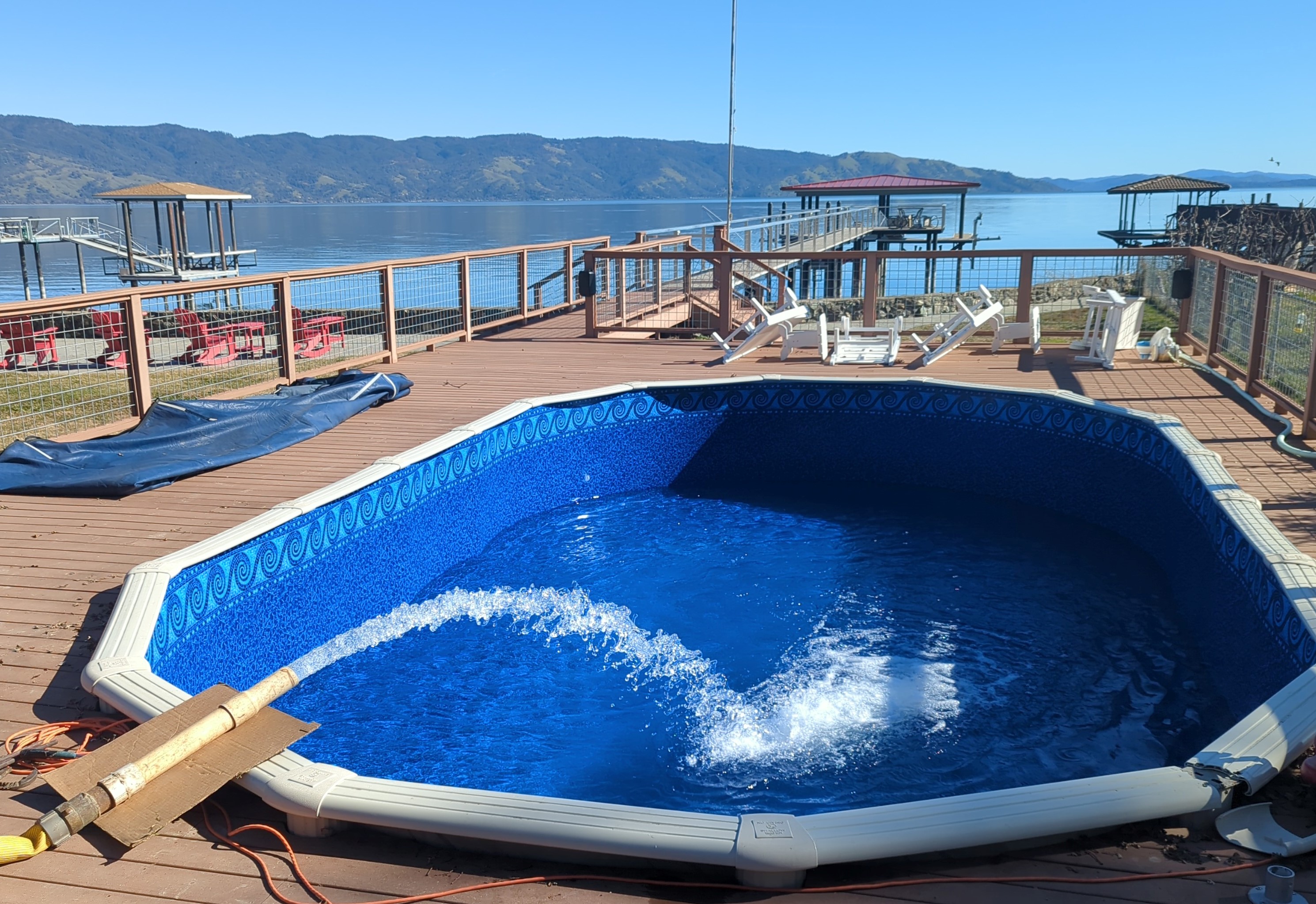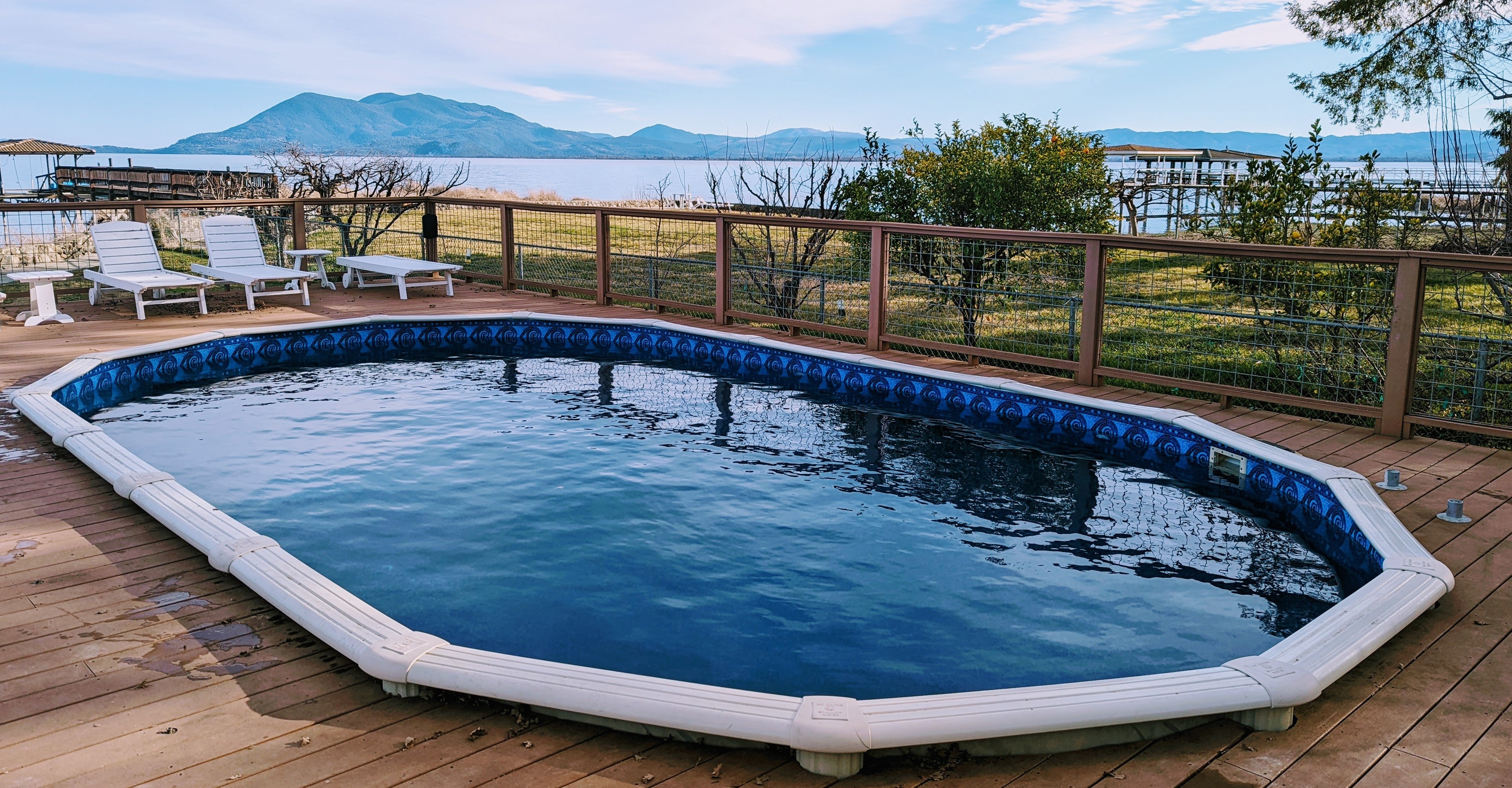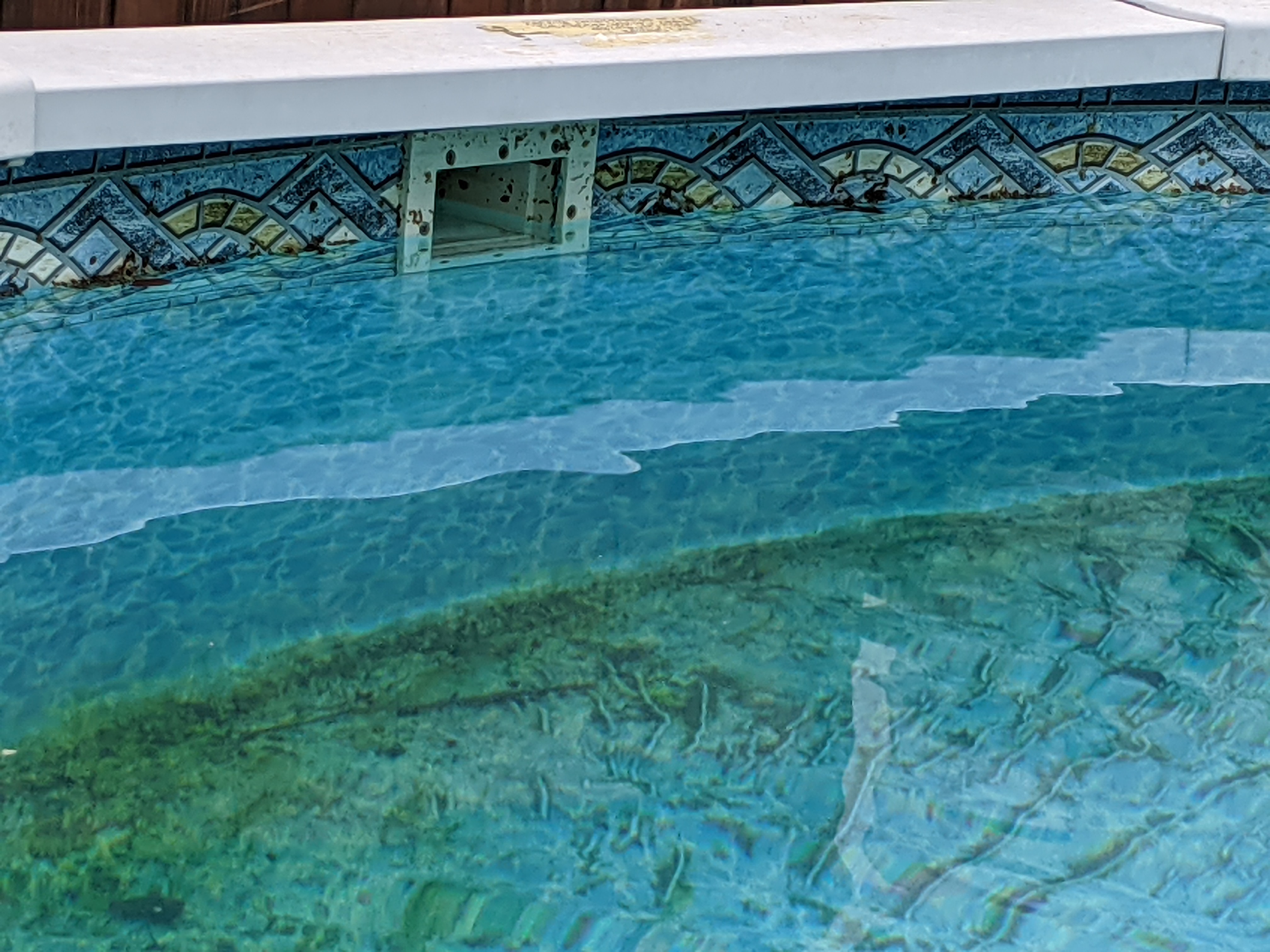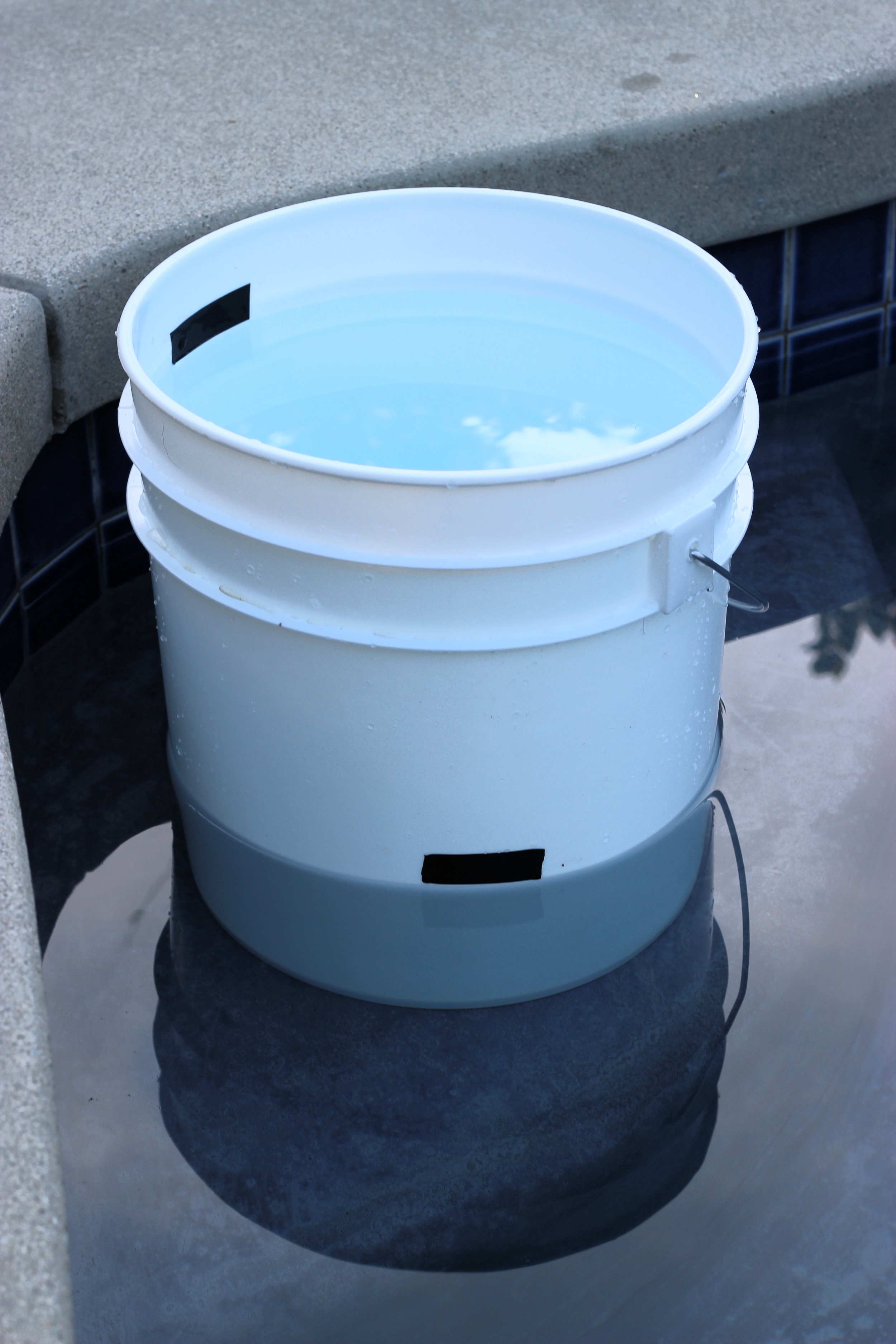Vinyl Liner Replacement
Vinyl-lined swimming pools typically require replacement of the liner every 10-15 years on average. With a wide selection of designs, replacing a liner gives homeowners the opportunity to give their pool a new personality and a fresh look to the backyard.
A Pristine Pool & Spa representative will provide an inspection of the pool liner as well as the structure and equipment of your pool and present all available options to you. We will help you choose a liner pattern and discuss any changes you may be interested in such as new lighting, skimmer changeout, step additions/modifications and equipment upgrades.
We primarily use liners from Latham, the largest designer and manufacturer of in-ground residential swimming pools in North America. Latham is one of the only pool manufacturers to receive ICC-ES Certification of its products. All Latham liners come with a 20-year warranty (3-year full, 17-year pro-rated). Latham is known throughout the industry as providing the highest-quality products for vinyl pools and their products are manufactured in the United States.
